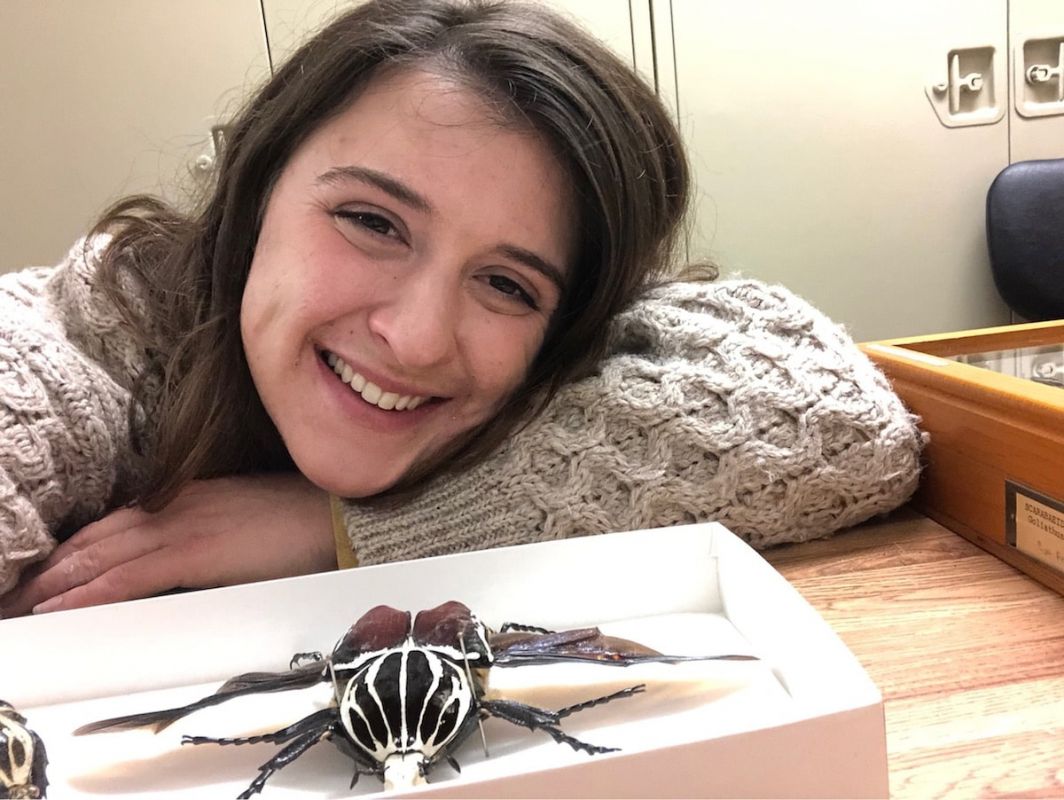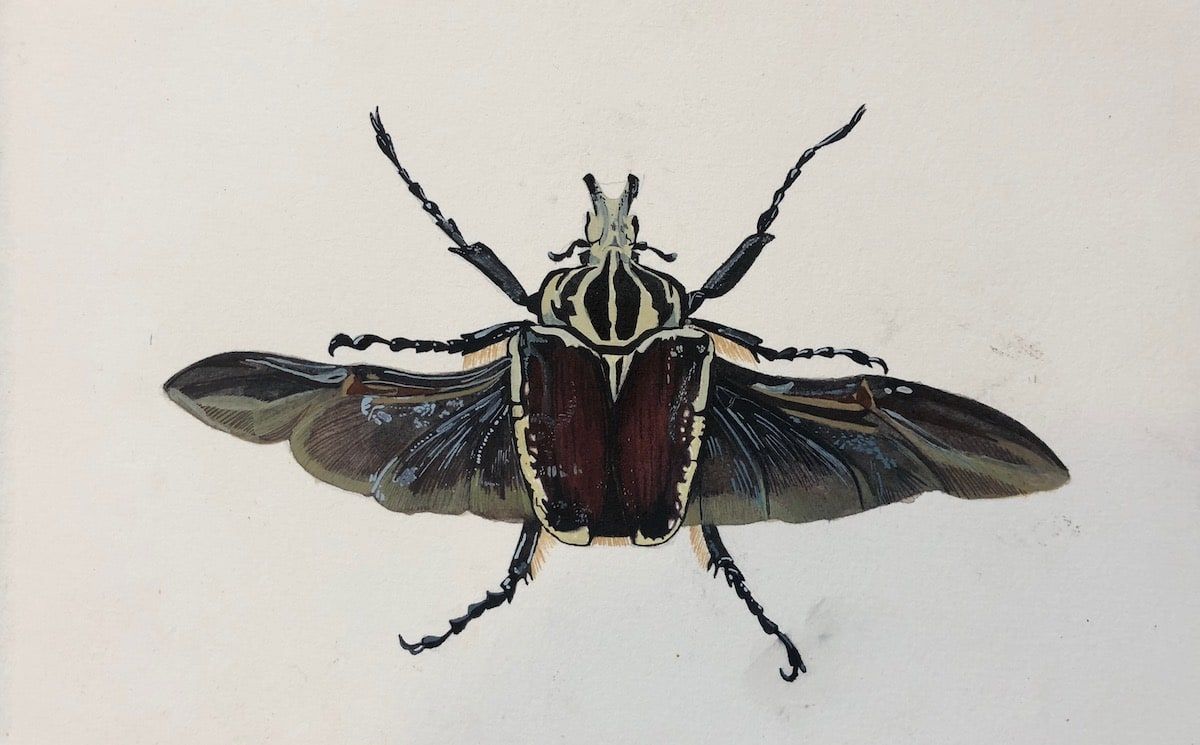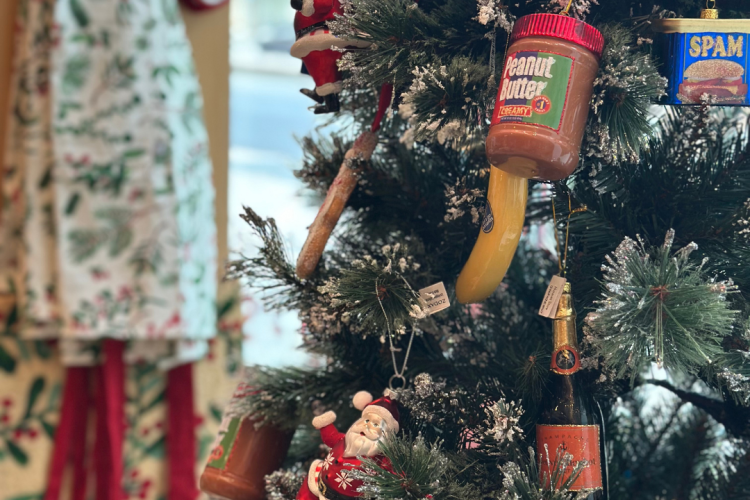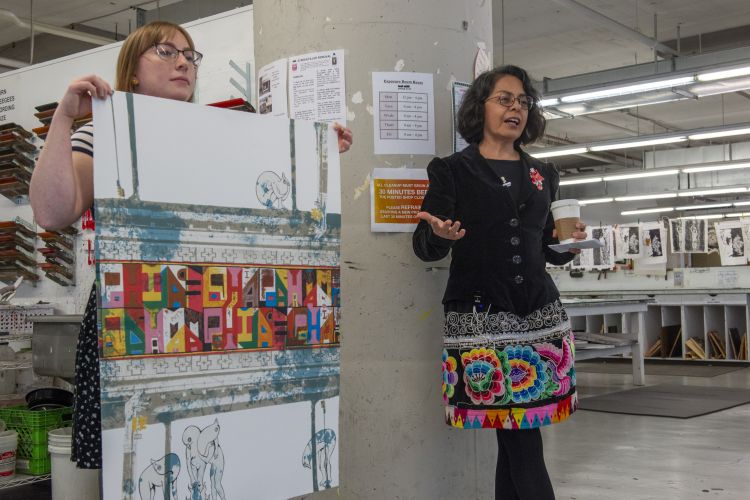STORIES FROM PAFA
Drawing Student Lets Insects Infest Her Art Practice
Gillian Cavoto’s studio at PAFA is full of bugs.
It’s not because she’s messy or untidy, but they are everywhere.
Fortunately for her fellow PAFA students, the bugs and insects are confined to paintings and drawings, and the occasional dead insect she found in the streets of Philadelphia.
“My studio work right now is pretty much only these technical insect drawings and paintings, it’s kind of obsessive,” she said. “I love it, it’s what I like to do. A lot of my critics tell me to work on other things but I’m not interested in working on other things right now.”
After working with seashells for a stretch of time, Cavoto (BFA ’19) was looking for a new subject. She eventually found a cicada one summer and started painting the six-legged creature and other creepy crawlers.
During a trip to The Academy of Natural Sciences of Drexel University to see an exhibit of dinosaur and fossil illustrations, the PAFA drawing major realized she could perhaps make a career out of her love for art and science.
“I really do love the things I paint, I’ve always been interested in the outdoors, I’ve always been interested in conservation,” she said. “I would definitely consider myself an environmentalist. While these paintings are super technical and scientific, there’s also a lot of love that goes into them.”
Cavoto now spends time at the Academy of Natural Sciences, not as a visitor but as a visiting artist where she gets to indulge her love of little creatures that crawl and work on her technical skills.
She’s currently researching the Academy’s collection and between sketching insects at the Academy and then painting in her studio, Cavoto sometimes spends up to 18 hours on a piece.
A time-intensive commitment, but it is time spent doing what she loves.
“You’d have to be crazy to paint these things if you didn't love them because there’s so much detail,” Cavoto said.
She credits PAFA professors Peter Van Dyck and John Horn with teaching her patience and helping her improve her art.
“They’re both very technically based and Peter taught me a lot about staying patient with the work. I can be kind of impatient which is why I turn out stuff so fast. As soon as I take a picture of it, it’s done,” she said. “John Horn is just very encouraging, he showed me where my strengths lie and where my weaknesses were.”
While she loves insects in her studio, Cavoto is the first to run if she spots a bug in her house.
“I don’t like bugs where they’re not supposed to be,” she said. “I go crazy if there’s a cicada or centipede in the house. I like to study them outside or if they’re dead because then they can’t crawl somewhere new. Bugs are a new subject for me in the last couple of years, but I still don’t like them in my house.”
We're so excited you're planning to visit PAFA!
Make time for art — visit us Thursday to Sunday.
Before reserving your tickets, please review helpful information about museum hours, accessibility, building access, and special admission programs.
If you have any questions, feel free to reach out to us at visitorservices@pafa.org — we’d love to help!





